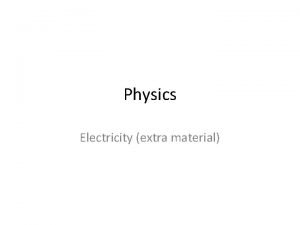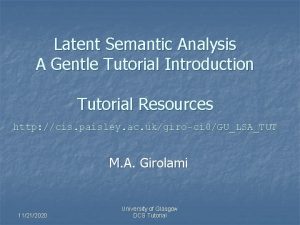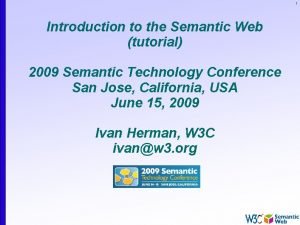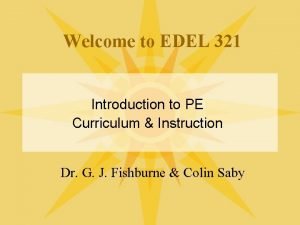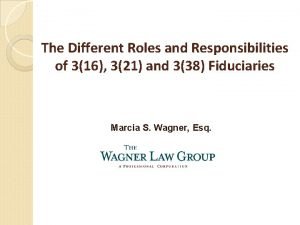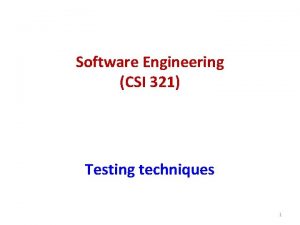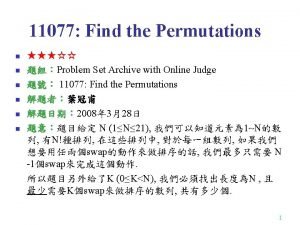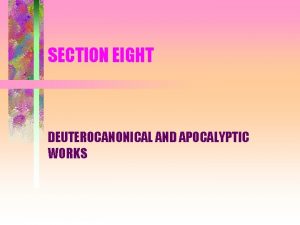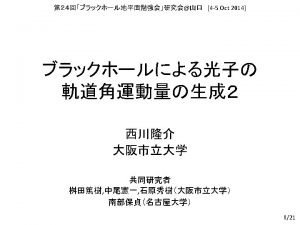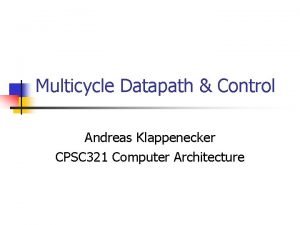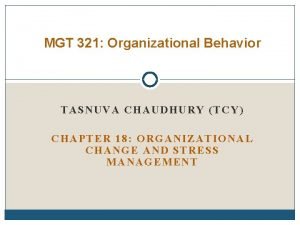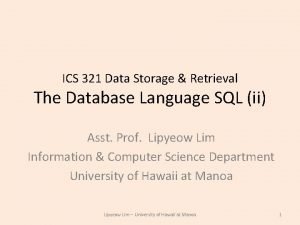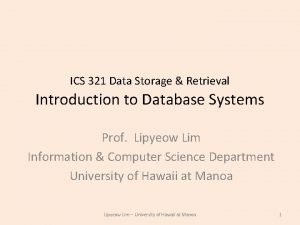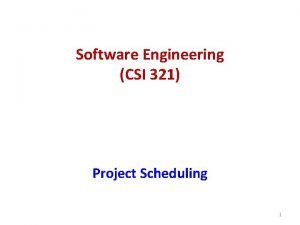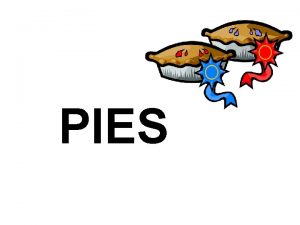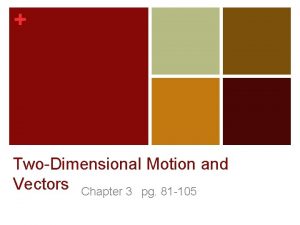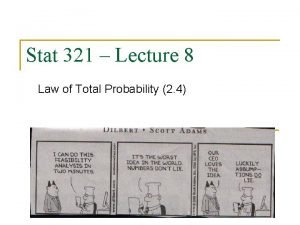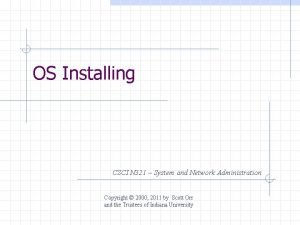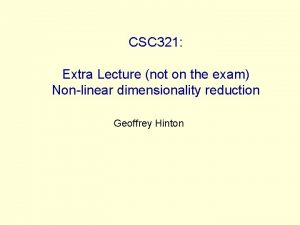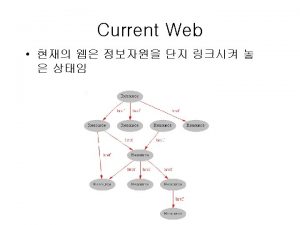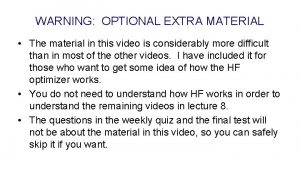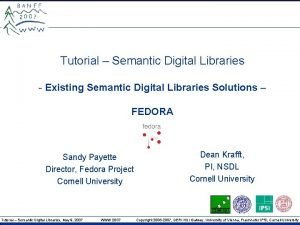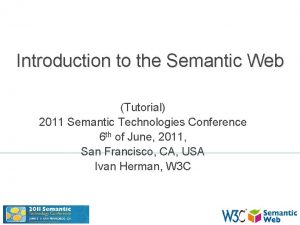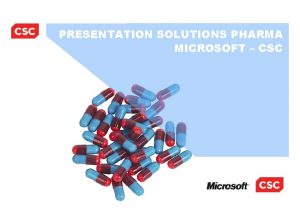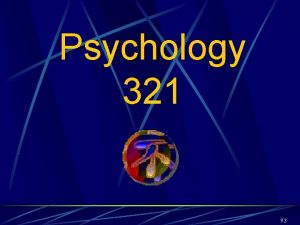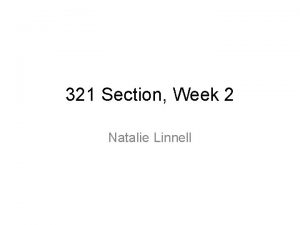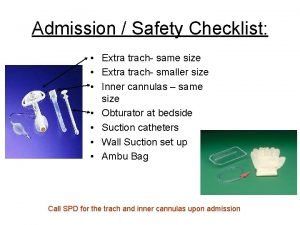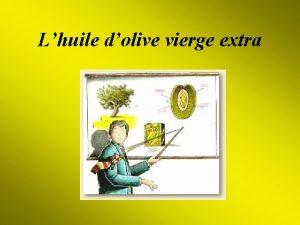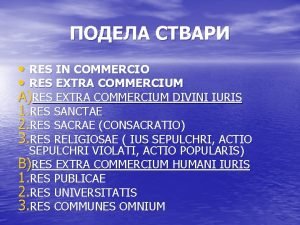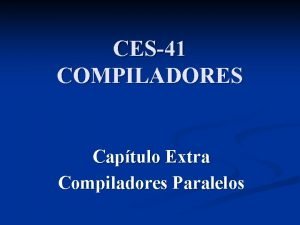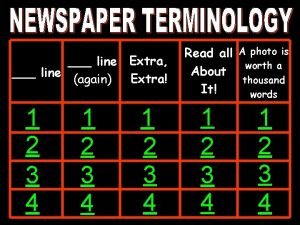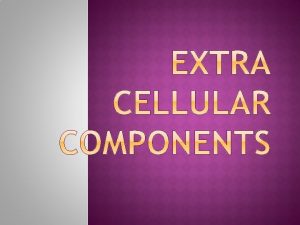CSC 321 Tutorial with extra material on Semantic































- Slides: 31

CSC 321: Tutorial with extra material on: Semantic Hashing and Conditional Restricted Boltzmann Machines (This will not be in the final exam) Geoffrey Hinton

Finding binary codes for documents 2000 reconstructed counts • Train an auto-encoder using 30 logistic units for the code layer. • During the fine-tuning stage, add noise to the inputs to the code units. – The “noise” vector for each training case is fixed. So we still get a deterministic gradient. – The noise forces their activities to become bimodal in order to resist the effects of the noise. – Then we simply threshold the activities of the 30 code units to get a binary code. 500 neurons 250 neurons 30 noise 250 neurons 500 neurons 2000 word counts

Using a deep autoencoder as a hash-function for finding approximate matches hash function “supermarket search”

Another view of semantic hashing • Fast retrieval methods typically work by intersecting stored lists that are associated with cues extracted from the query. • Computers have special hardware that can intersect 32 very long lists in one instruction. – Each bit in a 32 -bit binary code specifies a list of half the addresses in the memory. • Semantic hashing uses machine learning to map the retrieval problem onto the type of list intersection the computer is good at.

How good is a shortlist found this way? • Russ has only implemented it for a million documents with 20 -bit codes --- but what could possibly go wrong? – A 20 -D hypercube allows us to capture enough of the similarity structure of our document set. • The shortlist found using binary codes actually improves the precision-recall curves of TF-IDF. – Locality sensitive hashing (the fastest other method) is much slower and has worse precision-recall curves.

Semantic hashing for image retrieval • Currently, image retrieval is typically done by using the captions. Why not use the images too? – Pixels are not like words: individual pixels do not tell us much about the content. – Extracting object classes from images is hard. • Maybe we should extract a real-valued vector that has information about the content? – Matching real-valued vectors in a big database is slow and requires a lot of storage • Short binary codes are easy to store and match

A two-stage method • First, use semantic hashing with 28 -bit binary codes to get a long “shortlist” of promising images. • Then use 256 -bit binary codes to do a serial search for good matches. – This only requires a few words of storage per image and the serial search can be done using fast bit-operations. • But how good are the 256 -bit binary codes? – Do they find images that we think are similar?

Some depressing competition • Inspired by the speed of semantic hashing, Weiss, Fergus and Torralba (NIPS 2008) used a very fast spectral method to assign binary codes to images. – This eliminates the long learning times required by deep autoencoders. • They claimed that their spectral method gave better retrieval results than training a deep auto-encoder using RBM’s. – But they could not get RBM’s to work well for extracting features from RGB pixels so they started from 384 GIST features. – This is too much dimensionality reduction too soon.

A comparison of deep auto-encoders and the spectral method using 256 -bit codes (Alex Krizhevsky) • Train auto-encoders “properly” – Use Gaussian visible units with fixed variance. Do not add noise to the reconstructions. – Use a cluster machine or a big GPU board. – Use a lot of hidden units in the early layers. • Then compare with the spectral method – The spectral method has no free parameters. • Also compare with Euclidean match in pixel space

Krizhevsky’s deep autoencoder The encoder has about 67, 000 parameters. 256 -bit binary code 512 It takes a few GTX 285 GPU days to train on two million images. 1024 There is no theory to justify this architecture 2048 4096 8192 1024

Reconstructions produced by 256 -bit codes

A S E

A S E

A S E

A S E

A S E

Retrieval results

An obvious extension • Use a multimedia auto-encoder that represents captions and images in a single code. – The captions should help it extract more meaningful image features such as “contains an animal” or “indoor image” • RBM’s already work much better than standard LDA topic models for modeling bags of words. – So the multimedia auto-encoder should be a win (for images) a win (for captions) a win (for the interaction during training)

A less obvious extension • Semantic hashing gives incredibly fast retrieval but its hard to go much beyond 32 bits. • We can afford to use semantic hashing several times with variations of the query and merge the shortlists – Its easy to enumerate the hamming ball around a query image address in ascending address order, so merging is linear time. • Apply many transformations to the query image to get transformation independent retrieval. – Image translations are an obvious candidate.

A more interesting extension • Computer vision uses images of uniform resolution. – Multi-resolution images still keep all the highresolution pixels. • Even on 32 x 32 images, people use a lot of eye movements to attend to different parts of the image. – Human vision copes with big translations by moving the fixation point. – It only samples a tiny fraction of the image at high resolution. The “post-retinal’’ image has resolution that falls off rapidly outside the fovea. – With less “neurons” intelligent sampling becomes even more important.

How we extract multiple images with fewer pixels per image • This variable resolution “retina” is applied at 81 different locations in the image. • Each of the 81 “postretinal” images is used for semantic hashing. – We also use the whole image.

A more human metric for image similarity • Two images are similar if fixating at point X in one image and point Y in the other image gives similar post-retinal images. • So use semantic hashing on post-retinal images. – The address space is used for post-retinal images and each address points to the whole image that the post-retinal image came from. – So we can accumulate similarity over multiple fixations. • The whole image addresses found after each fixation have to be sorted to allow merging

Summary • Restricted Boltzmann Machines provide an efficient way to learn a layer of features without any supervision. – Many layers of representation can be learned by treating the hidden states of one RBM as the data for the next. • This allows us to learn very deep nets that extract short binary codes for unlabeled images or documents. – Using 32 -bit codes as addresses allows us to get approximate matches at the speed of hashing. • Semantic hashing is fast enough to allow many retrieval cycles for a single query image. – So we can try multiple transformations of the query.

Time series models • Inference is difficult in directed models of time series if we use non-linear distributed representations in the hidden units. – It is hard to fit Dynamic Bayes Nets to highdimensional sequences (e. g motion capture data). • So people tend to avoid distributed representations and use much weaker methods (e. g. HMM’s).

Time series models • If we really need distributed representations (which we nearly always do), we can make inference much simpler by using three tricks: – Use an RBM for the interactions between hidden and visible variables. This ensures that the main source of information wants the posterior to be factorial. – Model short-range temporal information by allowing several previous frames to provide input to the hidden units and to the visible units. • This leads to a temporal module that can be stacked – So we can use greedy learning to learn deep models of temporal structure.

An application to modeling motion capture data (Taylor, Roweis & Hinton, 2007) • Human motion can be captured by placing reflective markers on the joints and then using lots of infrared cameras to track the 3 -D positions of the markers. • Given a skeletal model, the 3 -D positions of the markers can be converted into the joint angles plus 6 parameters that describe the 3 -D position and the roll, pitch and yaw of the pelvis. – We only represent changes in yaw because physics doesn’t care about its value and we want to avoid circular variables.

The conditional RBM model (a partially observed CRF) • Start with a generic RBM. • Add two types of conditioning connections. • Given the data, the hidden units at time t are conditionally independent. • The autoregressive weights can model most short-term temporal structure very well, leaving the hidden units to model nonlinear irregularities (such as when the foot hits the ground). h v t-2 t-1 t

Causal generation from a learned model • Keep the previous visible states fixed. – They provide a time-dependent bias for the hidden units. • Perform alternating Gibbs sampling for a few iterations between the hidden units and the most recent visible units. – This picks new hidden and visible states that are compatible with each other and with the recent history.

Higher level models • Once we have trained the model, we can add layers like in a Deep Belief Network. • The previous layer CRBM is kept, and its output, while driven by the data is treated as a new kind of “fully observed” data. • The next level CRBM has the same architecture as the first (though we can alter the number of units it uses) and is trained the same way. • Upper levels of the network model more “abstract” concepts. • This greedy learning procedure can be justified using a variational bound. t-2 t-1 t

Learning with “style” labels • As in the generative model of handwritten digits (Hinton et al. 2006), style labels can be provided as part of the input to the top layer. • The labels are represented by turning on one unit in a group of units, but they can also be blended. t-2 t-1 t

Show demo’s of multiple styles of walking These can be found at www. cs. toronto. edu/~gwtaylor/
 Extra material
Extra material Latent semantic indexing tutorial
Latent semantic indexing tutorial Semantic web tutorial
Semantic web tutorial Gd & t full form
Gd & t full form Variance analysis meaning
Variance analysis meaning Material culture examples
Material culture examples Whats cultural lag
Whats cultural lag Example of material culture
Example of material culture Useful and harmful materials
Useful and harmful materials Edel 321
Edel 321 321 vs 338 fiduciary
321 vs 338 fiduciary Csi 321
Csi 321 123+132+321+312
123+132+321+312 Apokalypsis 321
Apokalypsis 321 Oam 321
Oam 321 Andreas klappenecker
Andreas klappenecker Mgt321
Mgt321 Ics-321
Ics-321 Ics-321
Ics-321 E commerce section 321
E commerce section 321 Eccentric leveling lugs
Eccentric leveling lugs 321 feedback
321 feedback Acuerdo 0321 de 2011
Acuerdo 0321 de 2011 Csi 321
Csi 321 3-2-1 dough
3-2-1 dough +add callholdrecord
+add callholdrecord 321 riq
321 riq Proximal processes
Proximal processes The royal gorge bridge in colorado rises 321
The royal gorge bridge in colorado rises 321 Stat 321
Stat 321 Evard life cycle
Evard life cycle Airtel voice mail service
Airtel voice mail service
